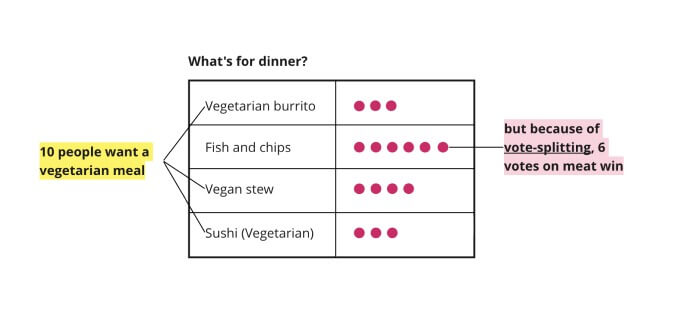Jan 24, 2022 | by Budi Tanrim
The problem with dot voting
While dot voting appears as a quick and democratic decision-making tool, it has flaws.
An obvious flaw is when a person votes on idea A, you get influenced—you see idea A more valuable. People often add their dots where everyone else has dotted. It’s a Bandwagon effect in action.
A common criticism is vote-splitting. It is when the team unable to see the relationship between options. As a result, the team might come to a false conclusion.

Another flaw is dot voting makes us see ideas as equal options. In reality, some ideas have different efforts and different levels of unknowns. If idea B requires larger effort than idea C, why would we see them as an equal option?
Consider to see dot voting as a discussion tool, not for making decisions. If you want, it’s better to classify the votes such as:
- Green for most impactful.
- Blue for low-hanging fruit.
- Red for an innovative idea that potentially can be a differentiator.
- Yellow for ideas we want to park.
But if that’s the case, probably better to use a quadrant.
Hi, this blog is no longer active. I move to substack. You can subscribe below or go to newsletter.buditanrim.co



